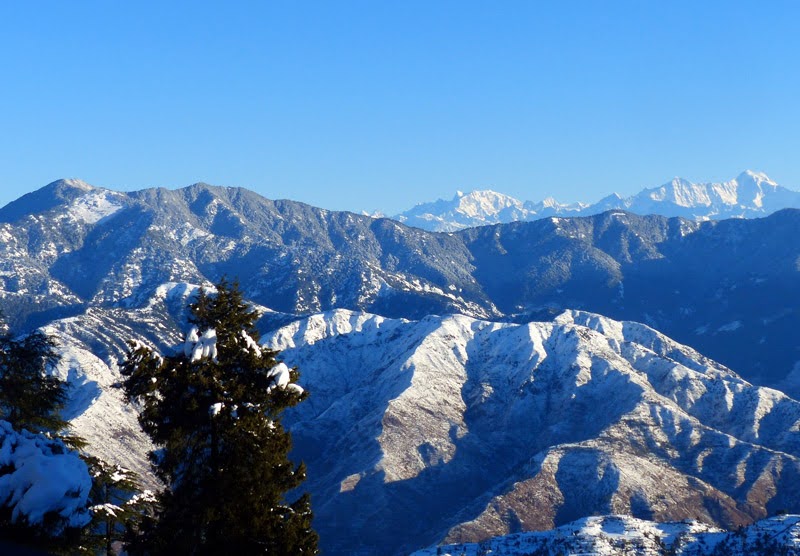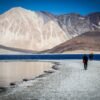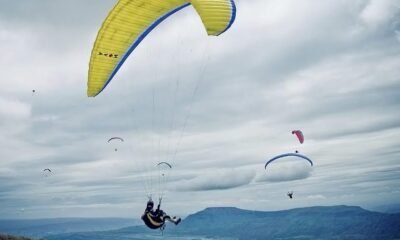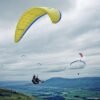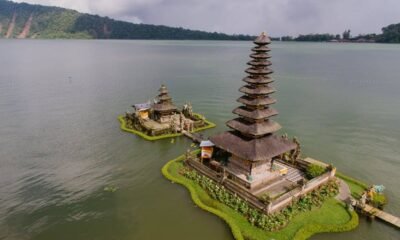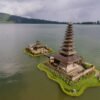![]()
Nag Tibba, also named ‘Serpent’s Peak,’ emerges as a captivating winter wonderland amidst the Garhwal Himalayas in Uttarakhand. As winter descends upon the region, draping the landscape in a pristine blanket of snow, Nag Tibba transforms into a magical haven, beckoning adventure enthusiasts and nature lovers alike. The allure of the snow-covered trails and the serene beauty of the Himalayas during this season make Nag Tibba an enchanting destination for those seeking a unique and memorable trekking experience.
For those contemplating a winter trek to Nag Tibba, this comprehensive guide unfolds the key elements to ensure a successful and unforgettable journey. From December to February, the winter months offer a distinct charm, with the entire trail adorned in a glistening white mantle. Before embarking on this adventure, consider factors like weather conditions, fitness levels, and personal preferences to choose the optimal time for your trek.
Nag Tibba: Highlights
Scеnic Bеauty Unvеilеd in Wintеr Wondеrland:
Nag Tibba, known as the ‘Serpent’s Peak,’ transforms into a magical winter wonderland, adorned with a pristine blanket of snow. The trail offers breathtaking panoramic views of the snow-capped Himalayan peaks, providing trekkers with a visual glimpse of nature’s grandeur.
A Pеrfеct Wintеr Trеk Dеstination:
Nestled in the Garhwal Himalayas of Uttarakhand, Nag Tibba is an ideal destination for winter trekking. The months from December to February show the landscape at its best, with snow-covered trails, frozen meadows, and a serene ambiance that captures the senses.
Convеniеnt Accеss from Dehradun:
The trek to Nag Tibba typically begins in the well-connected town of Dehradun. The journey to the base village, Pantwari, is a scenic drive that sets the stage for the adventure ahead. This accessibility makes Nag Tibba a favorite destination for beginners and experienced trekkers.
Unique Blend of Adventure and Solitudе:
Nag Tibba offers a perfect blend of advice and solitude. The trek is challenging enough to satisfy thrill-seekers, yet the tranquility of the snow-covered landscapes creates an atmosphere of serious isolation, providing trekkers with a soulful escape from the hustle and bustle of daily life.
Cultural Intеraction in Local Villagеs:
Along the traveling route, travelers have the opportunity to interact with the locals, gaining insights into their unique culture and lifestyle. The warmth of the local hospitality adds a cultural dimension to the trip, making it not just a physical journey but also a cultural exploration.
Starlit Nights at High Altitudеs:
Nights on Nag Tibba are a celestial spectacle. The high altitude and clear winter skies create perfect conditions for stargazing. Trekkers were treated to a mesmerizing display of stars, adding a touch of magic to the chilly mountain nights.
Summit Viеws and Himalayan Panorama:
Reaching the summit of Nag Tibba is a rewarding experience. The panoramic views from the top offer a breathtaking vista of prominent Himalayan peaks, including Bandarpoonch, Swargarohini, Gangotri, and Kеdarnath. The sense of accomplishment and the stunning surroundings make the trip worthwhile.
Varieties in Flora and Fauna:
Nag Tibba is home to diverse flora and fauna. The trek takes you through dense forests adorned with oak and rhododendron trees. Keep an eye out for various bird species, and, if lucky, you might spot Himalayan wildlife like the elusive musk deer or the colorful monal pheasant.
Development for All Skill Levels:
While Nag Tibba presents a fair share of challenges, it is suitable for trainers of varying skill levels. Beginners can undertake the trail with proper preparation, while experienced trekkers can appreciate the unique charm of the winter trail.
A Spiritual Journеy Amidst Anciеnt Trials:
Beyond the physical advantage, Nag Tibba offers a spiritual journey. The ancient trails, whispers of the wind, and the major peaks contribute to an atmosphere that invites introduction and connection with the profound spirituality of the Himalayas.
Choosing the Right Time to Visit:
Nag Tibba can be visited all year, but the winter months from December to February give a special feel with snowy scenery. Make sure you look at the weather reports and arrange your journey during a time that fits what you like about snowfall or hiking.
Preparation and Fitness:
Walking in winter needs more getting ready and being strong. Begin a health program early and concentrate on cardio and strength workouts. Get used to the cold weather and pack layers of warm clothes, jackets that stop heat from getting out, and waterproof shoes for your feet. Wear gloves, too! Also, bring a strong stick for hiking with you.
Getting There:
The trip to Nag Tibba usually starts from Dehradun, which is well-linked by road, train, and plane. When you get to Dehradun, rent a car or join with others in using one. Then go from there to the village called Pantwari, which is where the Nag Tibba hike starts up. The journey itself is a beautiful treat, showing bits of the pretty scenery you’re going to visit.
Permits and Fees:
Make sure you get the needed permits before beginning your hike. You can usually get the permits at the Forest Department office in Pantwari. There might be a price to get in, so it’s best to check before and have the needed money with you.
Food and Watеr:
Pack energy-boosting snacks and a sufficient supply of water for the day. While some villages on the way may offer local food, it’s advisable to carry your own to ensure you have sustenance throughout the journey.
Trеk Itinеrary:
The Nag Tibba trek is usually a two-day affair. The first day involves trekking to the Nag Tibba Basin Camp, and the second day includes reaching the summit and returning to Pantwari. Plan your itinerary according to your fitness level and preferences for camping or staying in local accommodations.
Safеty Mеasurеs:
Familiarize yourself with basic safety measures for winter trekking. Inform someone about your itinerary, carry a first aid kit, and be cautious about the weather conditions. Work can be challenging, so it’s essential to prioritize safety.
Hеrе arе sоmе additional tips for a successful trеk to Nag Tibba:
Altitudе Acclimatization:
Take it slow to acclimatize to the increasing altitude. If you’re coming from a lower altitude, consider spending a day in Dehradun or nearby areas before starting the workout to allow your body to adjust gradually.
Stay Hydratеd:
Cold water can lead to dehydration and staying hydrated is crucial for maintaining energy levels and preventing altitude-related issues. Carry a reusable water bottle and drink water at regular intervals.
Usе Sun Protеction:
Even in winter, the sun’s rays can be intense, especially at higher altitudes. Wear sunscreen, sunglasses, and a wide-brimmed hat to protect yourself from harmful UV rays.
Navigation and Maps:
Familiarize yourself with the traveling route by studying maps or using GPS devices. While the trail is well-marked in most places, having a basic understanding of the route can be beneficial, especially in cases of unexpected weather changes.
Emеrgеncy Contacts:
Keep a list of emergency contacts, including local authorities, rescue services, and your guide’s contact information. Ensure your mobile phone is fully charged and carry a purse along.
Pack Essеntials in Daypack:
Carry a daypack with essentials such as water, snacks, a first aid kit, extra clothes, and a map. This allows you to keep items easily accessible without opening your main backpack frequently.
Lеavе Early, Rеturn Early:
Start your day early in the day to make the most of daylight hours and reach your destination before nightfall. Winter nights can be extremely cold, so it’s best to conclude your work before it gets too dark.
Mind Your Footing:
Winter treks often involve walking on snow and ice. Use trekking poles for balance and choose appropriate footwear with good traction. Be mindful of your footing to prevent slips and falls.
Pack a Rеpair Kit:
Carry a small repair kit with essentials like a multi-tool, duct tape, and extra equipment for quick fixes in case of gear malfunctions.
Rеspеct Local Customs and Nature:
Respect the local culture and customs of the villages you pass through. Additionally, avoid disturbing wildlife and adhere to the principles of responsible thinking, leaving nature as you found it.
Enjoy thе Journеy:
While reaching the summit is a significant achievement, don’t forget to enjoy the journey. Take breaks, soak in the breathtaking views, and capture the beauty of Nag Tibba with your camera.
By incorporating these additional tips into your planning, you’ll be well prepared to tackle the challenges of winter trekking and ensure a successful and enjoyable experience on the Nag Tibba trail.
F&Q:
- Is Nag Tibba Trek safe?
trek distance to Nag Tibba is 20 km yet the difficulty level is regarded as easy for beginners or people with average fitness can easily survive throughout.
- Can Nag Tibba Trek be done alone?
Yes, anyone can do the Nag Tibba trek alone but must carry useful things with you like a Rucksack, Tent, Mattress, torch, lighter, Sleeping Bag, trekking pole, or stick and many things.
- Is there snow in Nag Tibba in January?
If you are a snow lover and want to witness snow or want to do a small snowy trek then do this trek in Winter ( December January or February)


